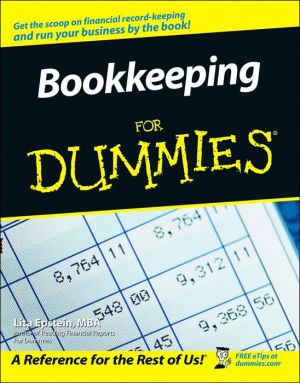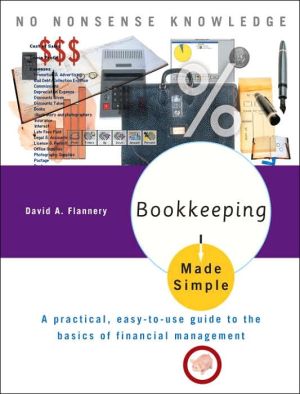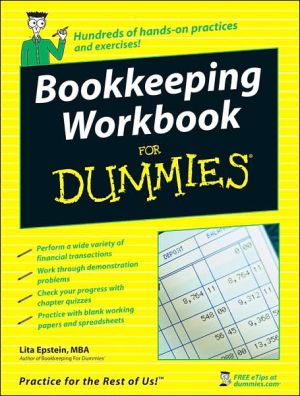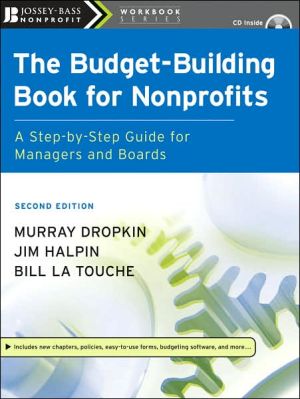Bookkeeping For Dummies
Accurate and complete bookkeeping is crucial to any business owner, but it’s also important to those who work with the business, such as investors, financial institutions, and employees. People both inside and outside the business all depend on a bookkeeper’s accurate recordings.\ Bookkeeping For Dummies provides the easy and painless way to master this crucial art. You’ll be able to manage your own finances to save money and grow your business. This straightforward, no-nonsense guide shows...
Search in google:
The painless way to master the art of bookkeeping! Manage your own finances to save money and grow your business! If you're a small business owner who manages your own finances, Bookkeeping For Dummies is for you. This friendly guide covers all the basics of bookkeeping — from recording transactions to producing balance sheets and year-end reports. It's the easy way to keep track of your business's financial well-being. Discover how to Keep track of transactions Produce balance sheets Create financial statements Manage assets and liabilities Keep ledgers and journals
Introduction. Part I: Basic Bookkeeping: Why You Need It. Chapter 1: So You Want to Do the Books. Chapter 2: Getting Down to Bookkeeping Basics. Chapter 3: Outlining Your Financial Roadmap with a Chart of Accounts. Part II: Keeping a Paper Trail. Chapter 4: Ledgers: A One-Stop Summary of Your Business Transactions. Chapter 5: Keeping Journals. Chapter 6: Computer Options for Your Bookkeeping. Chapter 7: Controlling Your Books, Your Records, and Your Money. Part III: Tracking Day-to-Day Operations with Your Books. Chapter 8: Buying and Tracking Your Purchases. Chapter 9: Counting Your Sales. Chapter 10: Employee Payroll and Benefits. Chapter 11: Employer-Paid Taxes and Government Payroll Reporting. Part IV: Preparing the Books for Year’s (or Month’s) End. Chapter 12: Depreciating Your Assets. Chapter 13: Paying and Collecting Interest. Chapter 14: Proving Out the Cash. Chapter 15: Closing the Journals. Chapter 16: Checking Your Accuracy — By Trial and Hopefully No Error. Chapter 17: Adjusting the Books. Part V: Reporting Results and Starting Over. Chapter 18: Developing a Balance Sheet. Chapter 19: Producing an Income Statement. Chapter 20: Completing Year-End Payroll and Reports. Chapter 21: Satisfying the Tax Man. Chapter 22: Prepping the Books for a New Accounting Cycle. Part VI: The Part of Tens. Chapter 23: Top Ten Ways to Manage Your Business Cash with Your Books. Chapter24: Top Ten Most Important Accounts for Any Bookkeeper. Appendix: Glossary. Index.







